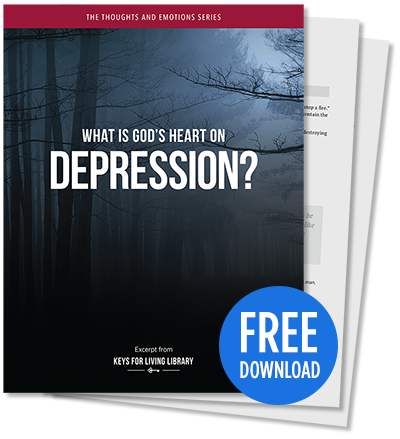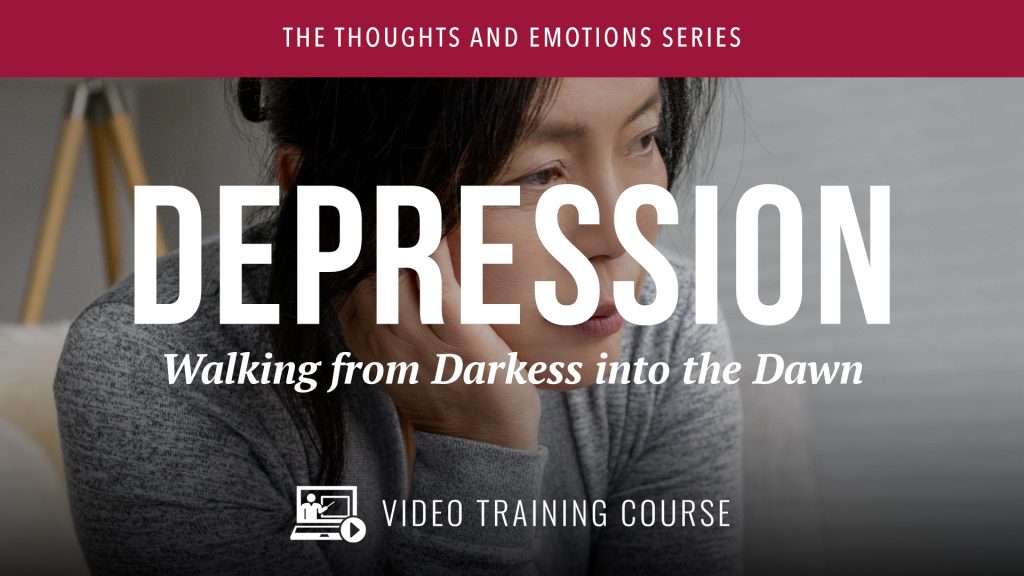By Eric Scalise, Ph.D., LPC, LMFT
Senior Vice President and Chief Strategy Officer
Hope For The Heart
NOTE: If you are having suicidal thoughts and intend to harm yourself, call 911 immediately. You can also call or text one of the following suicide prevention hotlines anytime. These free, confidential services are available 24/7 and exist to help and support you. Remember, you’re not alone. Help is available – and there is hope.
Call 1-800-273-8255
(National Suicide Prevention Lifeline)
Text 741741
(Crisis Text Line)
COVID & Mental Health
September is National Suicide Prevention Awareness Month and the ongoing disruptions caused by COVID-19 continue to negatively impact the emotional and psychological well-being of millions around the globe. Historically, the mental health impact of disasters and other traumatic events (including a pandemic) often outlast any physical effects, and the coming “tsunami” of needs we’re already seeing will continue well beyond the pandemic.
According to the National Institute of Mental Health (NIMH), 4 out of 10 adults report symptoms of anxiety or a depressive disorder, nearly a 400% increase from just a year ago (56% for young adults and college students). Similarly, 36% of adults report increased difficulty sleeping, and 32% report increased problems with eating/appetite. Mental health complaints are also disproportionately affecting specific populations, especially young adults, Hispanic Americans, African Americans, essential workers, and family caregivers for adults.

One alarming statistic has been the increase of suicidal ideation (thought patterns), as well as the number of serious attempts. The American Foundation for Suicide Prevention (AFSP) reports that prior to the pandemic, in 2019 alone, suicide was already the 10th leading cause of death in the United States with nearly 48,000 taking their lives and 1.4 million attempts. Tragically, this translates into an attempt every 23 seconds and a death every 11 minutes.
Even more disturbing, is the fact that suicide is the second leading cause of death among children (ages 10-14), adolescents (ages 15-19), and young adults (ages 20-24). The research shows 90% of all people who die by suicide have a secondary diagnosable psychiatric disorder at the time of their death. Major Depression and Bipolar Disorder are the most common, as well as Post-Traumatic Stress Disorder, alcoholism, and other substance abuse problems.

Risk Factors of Suicide
Jesus said,“the thief comes only to steal and kill and destroy” but He came so we “may have life and have it abundantly” (John 10:10). The news of a friend, coworker, or loved one’s suicide is almost always shocking and something that rips a gaping hole into the fabric of reality. Why? Because it seems like such an unnatural act and so contrary to God’s design when considering the human will to survive and live. More often than not, suicide attempts indicate a person is under extreme duress and in a state of acute crisis rather than primarily exhibiting attention-seeking behavior. Other precipitating factors of suicide include:
- Individuals with a family history of suicide
- Individuals with a prior history of depression and/or suicide attempts (between 30-50% of people who take their lives had at least one prior attempt)
- Individuals with poor impulse control and chronic self-destructive behaviors
- Individuals with severe or life-threatening health problems (especially among the elderly where the rate of suicides over age 75 is the highest of any age category)
- Individuals with an intense need to achieve (fear of failure) or be accepted (fear of rejection)
- Individuals with a history of family violence and/or abuse that create a climate for hopelessness and a loss of control
Know the Warning Signs
Beyond an awareness of risk, the recognition of actual warning signs is equally critical from a prevention standpoint. This is because there is almost always a gradual buildup before an actual attempt. Appetite and sleep disturbances, excessive irritability, angry outbursts of rage, apathy, and frequent isolation may represent not only the presence of depression, but the beginning of a downward emotional spiral leading to suicidal gestures.
When people feel trapped or despondent, they often lack the wherewithal or refuse to utilize available coping mechanisms and support systems. This emotional and relational “shut down” can further manifest as a sudden drop in job performance (school/grades for children and adolescents), the inability to cry or grieve, and a preoccupation with the notion of death. Suicidal ideation and verbalized statements may become more prevalent, sometimes with an unmistakable expression of intent.
According to Suicide Awareness Voices of Education (SAVE), over 80% of all people who attempt suicide give some warning of their intentions beforehand. If an individual is able to articulate a clearly planned method in which to attempt the act, including a set time frame, the impending threat is typically greater. Some individuals will give away meaningful or treasured possessions to close friends or family members just prior to an attempt as a way of creating a sense of closure or to say “goodbye.”
Likewise, people who have shown warning signs accompanied by a period of severe depression – and then display a sudden positive upswing in their emotions – might be very close to the edge. Unexpected calmness or a brighter mood can signal the person has already made a final decision and let go of whatever burden/pain they have carried around. Within their distorted frame of reference, life now seems “OK.”
Help is Available
When confronted with a strong or imminent threat of suicide, it is important to communicate concern for the individual, awareness the person is capable of/serious about self-harm, and that help is available. The National Suicide Prevention Lifeline is 1-800-273-TALK (8255). It may also be necessary to call 911 or get the person to the nearest emergency room. In most states, hospitals can involuntarily detain someone for 24-72 hours if there is a threat of suicide and further evaluation is required.
We also have several helpful resources (below) to help those struggling with suicidal thoughts and related mental health issues. These resources provide practical, biblical answers to life’s challenges – designed for those who need help and for those looking to help others.
As Christ followers, we have a sacred trust to respect, protect, and encourage human life. In the New Testament, the Greek word “metanoia” refers not only to the concept of turning around and changing direction – but turning away from darkness and walking into the light. As believers who help bear the light, a discerning spirit coupled with wise counsel can make all the difference in the world for a hurting and desperate soul.
“… help those in trouble.
Then your light will shine out from the darkness,
and the darkness around you will be as bright as noon.”
(Isaiah 58:10 NLT)
Eric Scalise, Ph.D., LPC, LMFT
Senior Vice President and Chief Strategy Officer
Hope for the Heart
Sources
“Mental Health, Substance Use, and Suicidal Ideation During the COVID-19 Pandemic—United States, June 24–30, 2020” Centers for Disease Control and Prevention (CDC), accessed May 3, 2021; https://www.cdc.gov/mmwr/volumes/69/wr/mm6932a1.htm.
“Suicide Facts & Figures: United States 2020,” American Foundation for Suicide Prevention (AFSP), accessed May 3, 2021, https://www.datocms-assets.com/12810/1587128056-usfactsfiguresflyer-2.pdf.
“Suicide: Common Misconceptions,” Suicide Awareness Voices of Education (SAVE), accessed May 3, 2021, https://save.org/wp-content/uploads/woocommerce_uploads/2018/05/Common-Misconceptions.pdf.
More Helpful Resources for You
If you or a loved one struggle with suicidal thoughts, if you feel trapped in a storm and see no hope for a brighter tomorrow – know that God is extending you a lifeline of hope. He loves you. He cares about you. He wants to help you – and other people do too.
Get our free download and find lasting hope and practical help today.
In this book, you’ll find real stories of hope and critical information to help prevent suicide:
- True stories of people who found hope
- Risk factors & warning signs
- Common misconceptions & causes
- How to prepare for a crisis & make a safety plan
- How to build a support system
- How to replace negative thoughts with God’s truth
- How to manage emotions
- How to recover after an attempt
- How to find hope in God’s Word
- How to help others struggling with suicidal thoughts
- Hope for those grieving a loss
Get the help you need today – for yourself or a loved one.
Do your days seem clouded … like there’s a fog you can’t break through? You’re not alone. God’s Word can give you hope and purpose in the midst of pain.
Get our free download and discover what God’s Word says about depression.
Video Course on Depression
This video course provides practical, biblical insights on depression from Dr. Eric Scalise, a licensed professional counselor with over 40 years of experience in the mental health field. Learn how to manage depression personally and how to help others who struggle with depression.
Free Download on Anxiety
Does fear and worry overwhelm you? Do you constantly wonder “what if?” There’s grace for the anxious heart.
Get our free download and discover how God’s Word can help calm the fearful heart.
Video Course on Anxiety
In this video course, you’ll learn biblical truths and practical guidance on general anxiety as well as some of the clinical aspects of anxiety. This course discusses common characteristics and causes of anxiety, various types of anxiety disorders, misconceptions about anxiety and faith, and ways to manage anxiety mentally, physically, emotionally, and spiritually.
Share this post
Stay connected with Hope For The Heart
Sign up for our email digest and be encouraged by inspiring stories, receive special discounts and stay informed about ministry updates, events, and new products.
We take privacy seriously and will carefully protect your email address. Every email includes the option of opting out at any time. By signing up to our list, you are agreeing to our Privacy Policy and consent to receive digital communications from Hope for the Heart and our ministry initiatives.








